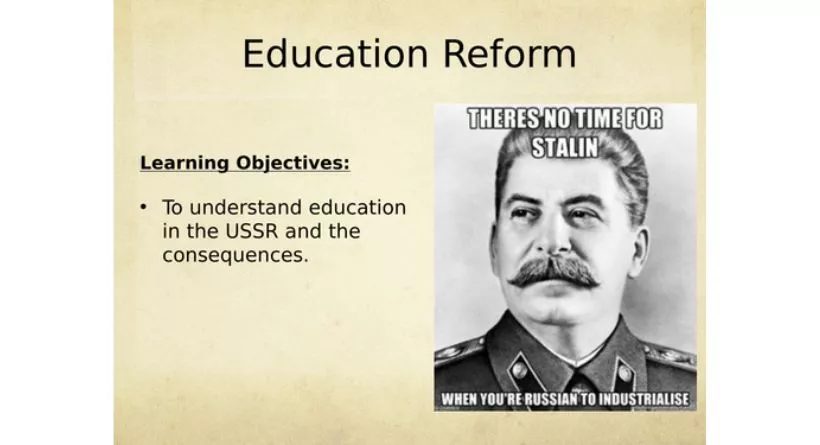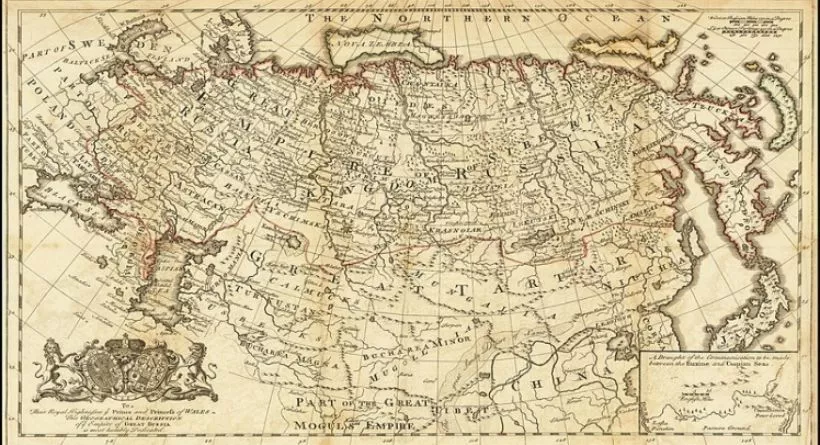Have you ever found yourself pondering over the educational reforms that took place under Joseph Stalin? You’re not alone. Many people are curious about how schools were reformed primarily to emphasize specific ideologies and outcomes during this era. As a content writing specialist and SEO expert, I understand your concerns and am here to shed light on this intriguing topic. In this blog post, we will delve into the problems that arose during Stalin’s reign, accept the challenges that educators faced, and promise to provide solutions that will give you a deeper understanding of the educational landscape of the time.
Our comprehensive guide will offer an overview of the key reforms and their implications, proving that we have the answers you seek. We’ll grab your attention by addressing the pain points that educators, students, and society faced as schools were reformed primarily to emphasize the Soviet Union’s goals. Stay with us as we embark on an enlightening journey through the educational changes that took place under Stalin’s rule, and explore the impact these reforms had on generations to come.
The Background of Stalin’s Educational Reforms

To understand the educational reforms under Joseph Stalin, it is crucial to grasp the broader context of the Soviet Union during his rule. The 1920s and 1930s were marked by economic turmoil, rapid industrialization, and the consolidation of power under Stalin. The educational system was not immune to these transformations, and schools were reformed primarily to emphasize the state’s objectives.
The Role of Education in Shaping Soviet Society
Education played a vital role in shaping the Soviet society according to Stalin’s vision. He recognized the potential of using schools as a means to instill communist values and create a new generation of loyal citizens. Consequently, the educational system was molded to serve the state’s political agenda, ensuring that it aligned with the goals of the Soviet Union.
Schools Were Reformed Primarily to Emphasize: Understanding the Need for Change
The need for change in the educational system arose from the necessity to produce citizens who could contribute to the Soviet Union’s ambitious industrial and economic goals. Schools were reformed primarily to emphasize the importance of discipline, loyalty, and a strong work ethic, along with the practical skills necessary for the nation’s development.
Key Aspects of Stalin’s Educational Reforms
Centralization and Control
One of the most significant aspects of Stalin’s educational reforms was the centralization and control of the system. The state took charge of all aspects of education, including curriculum development, teacher training, and resource allocation. This allowed the government to ensure that the educational system adhered to the state’s objectives and that no dissenting voices could undermine its goals.
Ideological Indoctrination
Under Stalin, schools were reformed primarily to emphasize ideological indoctrination. The curriculum was designed to promote the values of communism and loyalty to the state, with a particular focus on the glorification of Stalin himself. Students were taught to view the Soviet Union as a superior nation, destined to lead the world toward a communist utopia.
Emphasis on Science, Technology, and Industry
In addition to political indoctrination, Stalin’s educational reforms placed a strong emphasis on science, technology, and industry. The Soviet Union’s rapid industrialization required a skilled workforce, and schools were tasked with providing the necessary education. This led to a focus on technical and vocational training, ensuring that students were equipped with the skills needed to contribute to the country’s economic goals.
Schools Were Reformed Primarily to Emphasize: Examples and Analogies
To better understand the impact of Stalin’s educational reforms, consider the following analogy: Imagine a sculptor who chisels away at a block of stone to create a statue. Under Stalin, the educational system was the sculptor, and the students were the stone. The system carefully shaped the minds and skills of young Soviet citizens, molding them into the ideal image of a loyal, hardworking, and knowledgeable communist.
The Impact of Stalin’s Reforms on Teachers and Students
Teachers’ Roles and Responsibilities
The educational reforms under Stalin greatly impacted the roles and responsibilities of teachers. They were expected to be staunch advocates of the state’s ideology and transmit these values to their students. Teachers were also responsible for instilling discipline and obedience, ensuring that students conformed to the Soviet Union’s expectations.
Student Experiences and Outcomes
Students’ experiences during this era were heavily influenced by the educational reforms. Schools were reformed primarily to emphasize adherence to the state’s goals, which meant that students’ individual needs and interests often took a backseat. Consequently, students faced a rigid curriculum and a highly structured environment, which had a lasting impact on their development and future prospects.
Schools Were Reformed Primarily to Emphasize: Tips for Understanding the Changes
To better understand the changes brought about by Stalin’s educational reforms, consider these tips:
- Examine the broader historical context of the Soviet Union.
- Analyze the role of education in promoting the state’s political objectives.
- Reflect on the impact of these reforms on both teachers and students.
The Long-Term Effects of Stalin’s Educational Reforms
The Legacy of the Soviet Education System
The legacy of Stalin’s educational reforms can still be felt today. Despite the end of the Soviet Union, many aspects of the education system, such as centralized control and an emphasis on technical skills, continue to shape modern Russian education. Moreover, the impact of ideological indoctrination has left a lasting imprint on generations of citizens.
The Impact on Post-Soviet Education Policies
Following the collapse of the Soviet Union, many post-Soviet countries sought to distance themselves from the educational practices of the past. However, the influence of Stalin’s reforms can still be observed in the ongoing struggle to balance the need for a skilled workforce with the desire to promote critical thinking and individual development.
Schools Were Reformed Primarily to Emphasize: Analyses and Reflections
As we analyze and reflect on the long-term effects of Stalin’s educational reforms, it is essential to recognize the far-reaching consequences of these changes. Schools were reformed primarily to emphasize the state’s objectives, with an emphasis on ideological indoctrination and the promotion of technical skills. These reforms have had a lasting impact on the education system, and understanding this history is crucial for future progress.
Conclusion
In conclusion, understanding the historical educational reforms under Joseph Stalin provides valuable insights into the Soviet Union’s past and its impact on the present. We have explored the background, key aspects, and long-term effects of Stalin’s educational reforms, focusing on how schools were reformed primarily to emphasize the state’s objectives. By analyzing and reflecting on these changes, we can better appreciate the significance of education in shaping societies and the lives of individuals. We encourage you to delve further into this fascinating topic and use the knowledge gained to broaden your perspective on the power of education and its role in history.

